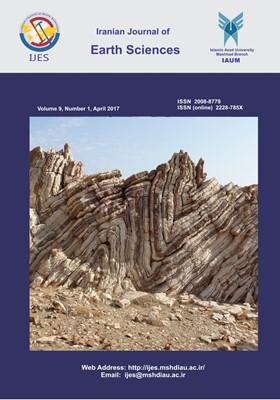Sea-level change and deep sea sequence stratigraphy: A Middle Jurassic siliciclastic strata (Kashafrud Formation), NE Iran
الموضوعات : Mineralogy
1 - Department of geology, Islamic Azad University, Mashhad Branch, Mashhad, Iran
الکلمات المفتاحية: Iran, sequence stratigraphy, Kashafrud Formation, Kopet Dagh Basin,
ملخص المقالة :
The Upper Bajocian- Lower Bathonian succession in the Kopet-Dagh Basin of NE Iran represents fluvio-deltaic to turbidite deposits. The Kashafrud Formation provides an excellent opportunity to study the interplay between deep-water sedimentation and syndepositional tectonic subsidence (or uplift) in the region. The effects of these processes caused sea-level changes, variation in depositional sequences, and formation of different types of sequence boundaries. The Kashafrud Formation is recognized as a super-sequence and is overlain and underlain by type 1 sequence boundaries. Based on sedimentological analysis, twelve lithofacies and three facies associations have been identified in the Kashafrud Formation. The succession is represented by parasequences formed as part of a second order super-sequence, and a fourth order regression. The thickness variations indicate a strong influence of basin-floor topography on the location of depositional successions. High rates of sea-level fall led to the development of a limited number of major incised channels; in contrast the major thick-bedded mudstone indicates high rates of sea-level rise for prolonged periods. The interpreted sea-level curve during deposition of the Kashafrud Formation can be correlated with the world sea-level curve for the Middle Jurassic, with differences mainly related to local structural events in the basin. Tectonism, compaction and rate of deposition were the main factors that controlled the vertical facies transitions in these parasequences.


